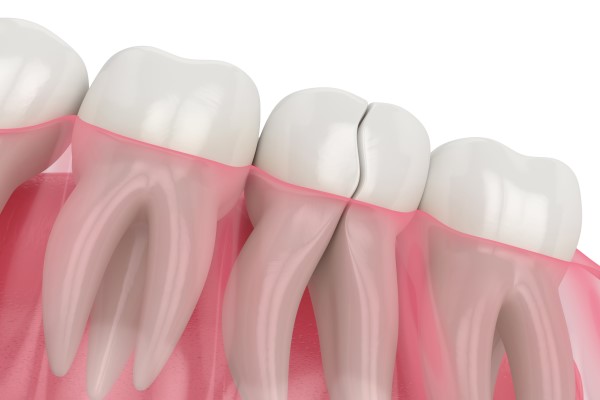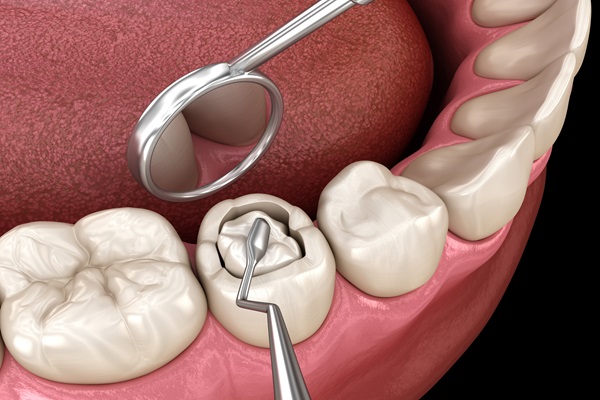Repair a Cracked Tooth: Dental Restoration Options

There are a variety of dental restoration options to choose from when it comes to repairing cracked, chipped, or broken teeth. These types of dental restoration restore the appearance and function of damaged teeth, allowing you to get back to how life was before the injury occurred.
Popular dental restoration options
Here are some of the ways a dentist might opt to restore a patient’s cracked tooth:
1. Dental bonding
Also known as composite bonding, dental bonding is a non-invasive approach to restoring damaged teeth since it does not involve making any permanent alterations to them. This means the patient is free to explore other options in the future if they choose to do so.
Composite bonding involves applying composite resins that are made from mixtures of plastic and glass directly to teeth. These resins can be color-matched with the patient’s teeth, making it difficult to notice any repairs made with them. Composite bonding is typically recommended for a cracked tooth when the damage is minor and does not affect the inner layers of the tooth, like its pulp chamber.
2. Dental crowns
Also called caps, these restorations are used to cover up the visible part of teeth. They can be used to hold a cracked tooth together, so it does not break apart. The crown also restores the function of the damaged tooth while protecting it from acids in the mouth.
Crowns are usually recommended for more severe cracks on teeth and their installation requires removing enamel from the tooth. That means the tooth will always need to be protected with a dental restoration since its shaved-off enamel can no longer effectively protect it from irritants in the mouth.
3. Root canals
A severely cracked tooth almost always requires root canal therapy, which involves removing the contents of the tooth’s pulp chamber. A severe crack leaves the nerve, soft tissues, and connective tissues in the pulp chamber vulnerable to infection since even the tiniest of cracks is like a superhighway for acids and bacteria in the mouth. Teeth that have been restored with a root canal are typically covered up with a crown to give them an extra level of protection.
4. Veneers
Veneers are thin restorations that are cemented to the front part of teeth. They can be used to fix minor to moderate cracks that only affect the front part of the tooth. The veneer serves as a barrier that prevents bacteria and other irritants in the mouth from getting into the crack, causing further damage to the tooth.
5. Implants
When a crack extends into parts of a tooth below the gum line, an extraction is typically recommended. An implant can then be used to replace the patient’s lost tooth. The implant replaces the tooth’s root, and a crown is placed on it to replace the extracted tooth.
Faster treatment leads to better results
The longer you take to address a cracked tooth, the more damaged it will become. Give us a call or visit our Maitland clinic to set up a consultation with our dentist.
Request an appointment here: https://www.emergencydentistinorlando.com or call Maitland Square Dentistry at (407) 337-1112 for an appointment in our Maitland office.
Check out what others are saying about our dental services on Yelp: Dental Restorations in Maitland, FL.
Related Posts
Are you in need of dental restoration and don’t know where to turn? You are not alone. Countless patients ask themselves this nagging question daily. We all want to have the most beautiful and bright smile but aren’t sure how to achieve our goal. Fortunately, there are solutions that you can count on. There are many…
Any dental work that is done to repair missing or damaged teeth are types of dental restorations, which can include anything from minor fillings to full implants. How long these restorations take depends entirely on what kind of work is necessary. Some procedures can be performed in a single short appointment, while others might be…
Dental restoration solutions are necessary when teeth are worn down by bruxism, decay, sudden trauma, or another cause. It is important to understand the various options that are available for dental restoration for worn teeth in order to make an informed decision about the treatment solution that is right for you.During a visit with a…
Unlike general dentistry, which focuses on routine examinations and treatment, restorative dentistry is a specialization focusing on the repair or replacement of damaged or missing teeth. Bruxism is a fairly common condition that causes the clenching and grinding of teeth. While no single cause exists for bruxism, the results of teeth grinding are well documented.…


